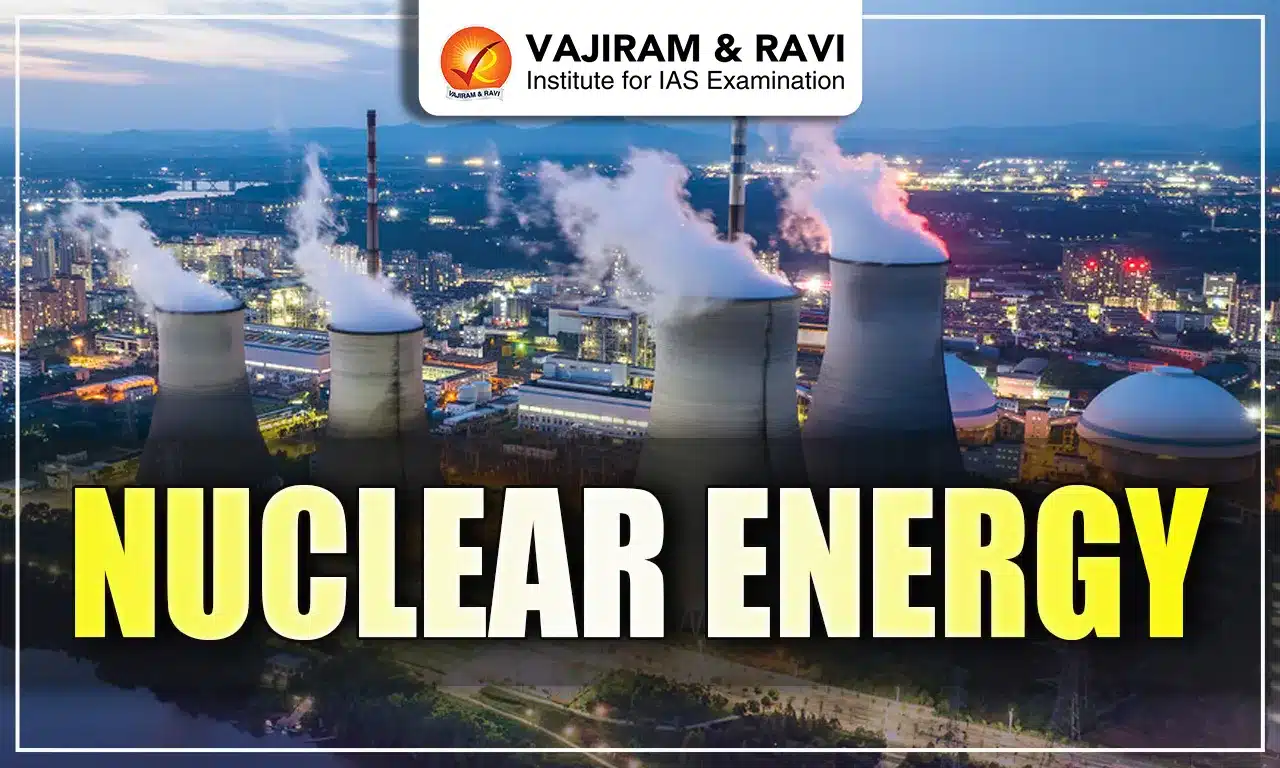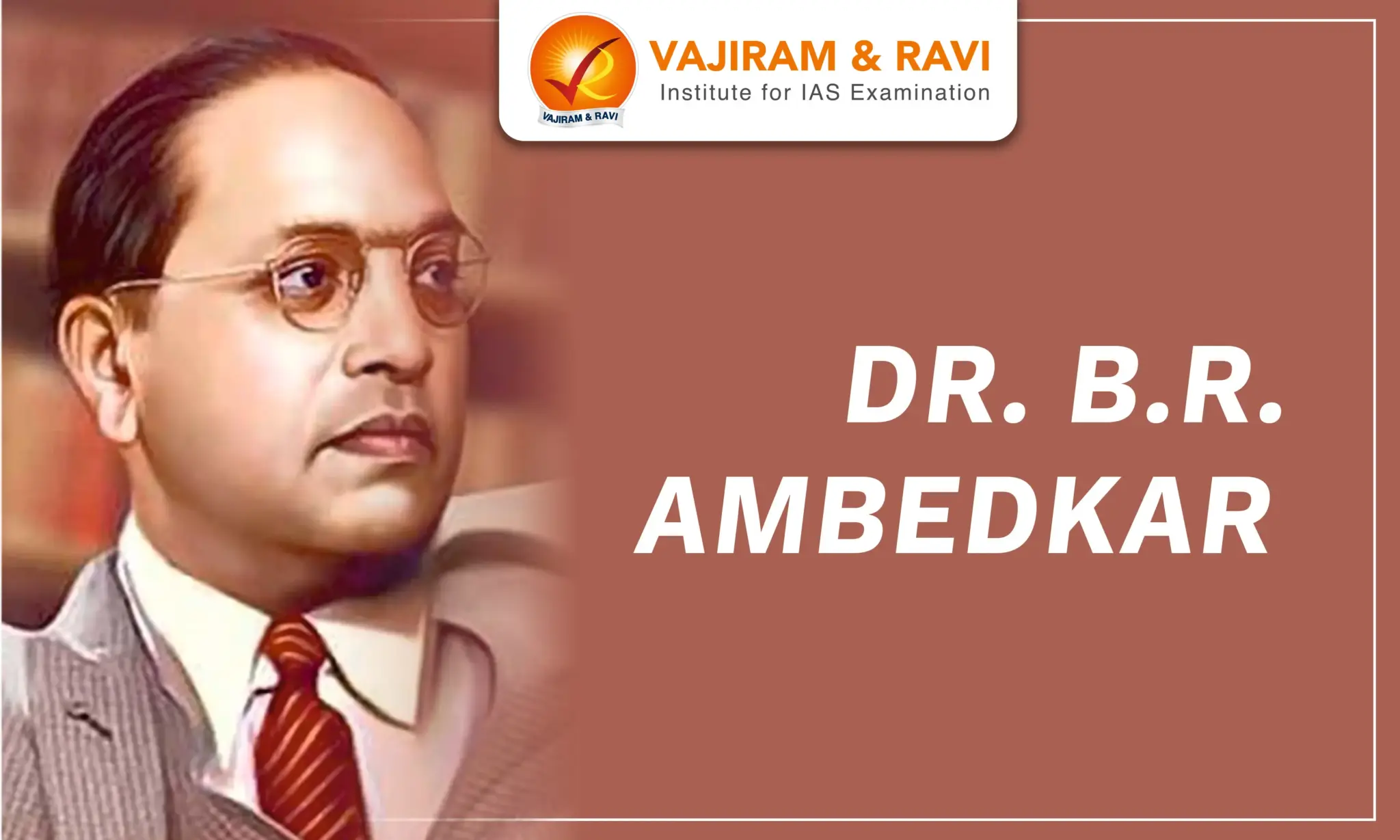Nuclear energy comes from splitting atoms in a reactor to heat water into steam, turn a turbine, and generate electricity. Compared to other forms of renewable energy, nuclear energy is considered beneficial, because of its smaller land footprint and the amount of waste it produces. Among all the developing nations, India is the only one to have generated electricity using indigenously developed, demonstrated, and deployed nuclear reactors.
India ranks third in terms of electricity production worldwide; nuclear energy is the fifth-largest source of electricity for India.
Potential of Nuclear Energy in India
India stands at seventh position in terms of the number of nuclear reactors, with over 22 nuclear reactors in 7 power plants across the country which produces 6780 MW of nuclear power.
With an aim to increase its atomic power contribution from 3.2% to 5% by 2031, the expansion of nuclear power capacity will help in the country’s energy transition to meet the goal of a net zero economy.
Nuclear Energy Resources in India
In terms of nuclear energy sources, India possesses a small uranium resource but a sizable thorium resource. Both uranium and thorium have unique properties that govern their use in nuclear reactors. However, unlike uranium, thorium cannot be used as nuclear fuel in a reactor on its own. India faces challenges in meeting its growing energy demand due to import dependency and inconsistent energy sector reforms.
- BP's Energy Outlook predicts a 156% rise in India's energy consumption from 2017 to 2040.
- In 2022-23, India plans to import 100 tonnes of natural uranium, with existing agreements in place with Canada, Kazakhstan, Russia, and Uzbekistan for uranium purchases.
Uranium Deposits in India
The uranium ore mining and processing industry of the country began at Jaduguda in 1968.
- The first uranium deposit in India was found in 1951 at Jaduguda, in the Singhbhum Thrust Belt (Jharkhand).
- Operating mines: Jaduguda Mine, Bhatin Mine, Narwapahar Mine, and Turamdih Mine.
- Additionally, a number of uranium occurrences have been discovered in Andhra Pradesh's Cuddapah basin.
- In the Mahadek basin of Meghalaya, sandstone-type uranium deposits like Domiasiat, Wahkhyn, and Mawsynram are found.
- Other areas in Rajasthan, Karnataka, and Chhattisgarh hold promise for developing into some major deposits.
Thorium Deposits in India
India has reserves of thorium in sufficient quantities as compared to other parts of the world.
- Monazite sands on India's east and west coasts, as well as in some areas of Bihar, contain thorium.
- On the Kerala coast, however, there is a much higher concentration of monazite sand. Monazite sands have been estimated to contain more than 15,200 tonnes of uranium.
- The main producing states: Rajasthan, Tamil Nadu, Jharkhand, Bihar, and Kerala.
Nuclear Power Plants in India
The operation phase of a nuclear power plant is generally the longest phase of its life cycle. In India, there are 4 Light Water Reactors (LWRs) and 19 Pressurized Heavy Water Reactors (PHWRs) in total.
- The first largest indigenous 700 MWe Kakrapar Nuclear Power Plant Unit-3 in Gujarat began operations at full capacity.
- The country is planning to construct 12 new nuclear power reactors by 2024.
- Reactors under IAEA safeguards: India's fourteen nuclear reactors are under IAEA safeguards due to their use of imported fuel.
- In 2014, India placed its reactors under IAEA safeguards, granting the international nuclear watchdog access, and showcasing its peaceful nuclear energy intent.
India's Three-stage Nuclear Power Programme
India's three-stage nuclear power programme was formulated by Dr Homi Bhabha in the 1950s to secure the country's long-term energy independence through the use of uranium and thorium reserves found in the monazite sands of the coastal region of South India. India is currently in the second stage of its ambitious nuclear program.
- The program's ultimate goal is to make it possible for India to use its thorium reserves to meet the nation's energy needs.
- Additionally, NITI Aayog Proposed that the government concentrate on establishing small modular reactors with private investment to address India's energy requirements and replace ageing thermal power plants.
Stage 1: Natural Uranium Fuelled Pressurized Heavy Water Reactors (PHWRs)
In the first stage, natural uranium was used as fuel for Pressurized Heavy Water Reactors, which also produced plutonium-239 as a byproduct while generating electricity. The second stage would also utilize the byproduct plutonium-293.
The main reasons for selecting PHWRs for the First Stage of the Indian nuclear power programme in the 1960s were:
- The use of natural uranium oxide as the fuel.
- The best utilisation of mined uranium in energy production.
- The prospect of establishing a completely self-sufficient technology.
| Advantages | Disadvantages |
|
- There is no need for enrichment.
- As enrichment is avoided, no depleted uranium tails are made.
- The reactor can be refuelled without shutting it down, avoiding the downtime required by most other reactors. |
- It needs pure heavy water.
- Heavy water absorbs neutrons, forming tritium (H-3), a low-level radioactive hazard.
|
Stage 2: Fast Breeder Reactors (FBRs) Utilizing Plutonium-Based Fuel
The second stage involves using plutonium-239 to produce mixed-oxide fuel, which would be used in Fast Breeder Reactors.
- Furthermore, thorium will be used in the reactor to create uranium-233 once there is a sufficient stockpile of plutonium-239. This uranium is essential for the third stage.
| Advantages | Disadvantages |
|
- Safe and efficient. - Green energy source because waste from the first stage nuclear program is reprocessed and used as fuel in FBR. - Capability of efficient utilization of uranium. |
- FBRs are cooled by liquid sodium, which reacts explosively with both air and water.
- FBRs containment dome is not as strong as in other reactors. |
Stage 3: Advanced Nuclear Power Systems for Utilization of Thorium
The primary goal of stage 3 is to achieve a long-term nuclear fuel cycle. The advanced nuclear system would combine thorium and uranium-233. So, using a thermal breeder reactor, India's abundant thorium would be utilized. This stage is currently in the research phase.
| Advantages | Disadvantages |
|
- Thorium, in a water-cooled or molten-salt reactor, can generate more uranium-233 than it consumes. - Thorium's abundance and ability to create fissile material offer a lasting energy solution. - Thorium reactors may be greener, yielding less long-lived nuclear waste than uranium reactors. - Thorium fuels are deemed proliferation-resistant, unlike uranium fuels, as they don't produce plutonium. |
- Extracting the abundant metal is currently expensive. - Require substantial investments for testing, analysis, and licensing. - Thorium is 'fertile' and non-fissile, needing a fissile material like recycled plutonium for a chain reaction. - High temperatures are essential due to the elevated melting point of thorium oxide for high-density production. - Large amounts of Uranium-232 in irradiated thorium fuels can lead to substantial gamma-ray emissions. |
Institutions of Nuclear Energy in India
Important energy policy organizations of the Government of India, such as NITI Aayog and the Central Electricity Authority), have renewed their focus on nuclear power to assist India in achieving its goals for the clean energy transition.
- Atomic Energy Commission: The AEC of India is the governing body of the Department of Atomic Energy (DAE). The DAE is under the direct charge of the Prime Minister.
- The functions of the AEC are to organize research in atomic science in the country, train atomic scientists in the country, and promote nuclear research in the commission's own laboratories in India.
- Atomic Energy Regulatory Board (AERB): It was formed in 1983 and comes under the Atomic Energy Commission. It oversees nuclear safety regulations and their implementation.
- Nuclear Power Corporation of India (NPCIL): NPCIL is the owner and operator of every nuclear power plant in India, except for the Prototype Fast Breeder Reactor (PFBR).
- It is responsible for the design, construction, commissioning, and operation of nuclear power reactors.
- Bhabha Atomic Research Centre: It operates under the DAE and its core mandate is to sustain peaceful applications of nuclear energy. It oversees every aspect of nuclear power production.
Advantages of Nuclear Energy in India
India's growing energy demand necessitates optimal utilization of all energy sources, with nuclear power showing significant potential for sustainable long-term energy security.
- Energy security: India's nuclear power could provide a reliable solution to the country's power demand in contrast to wind and solar, which are not available around the clock.
- Reduction in GHGs: Nuclear power plants produce no significant levels of greenhouse gasses or pollutants. This could reduce India's contribution to global Green House Gases (GHGs), which currently stands at 6.55%, with the energy sector accounting for slightly more than two-thirds of it.
- Sustainable future: With an aim to increase its atomic power contribution from 3.2% to 5% by 2031, this surge in the nuclear energy contribution in India will help the country lead towards a more sustainable and economic future.
- Weather-independent power: Renewable energy such as solar and wind power face limitations tied to weather conditions and land needs. In comparison, nuclear energy offers consistent, weather-independent power with a smaller land footprint.
Disadvantages of Nuclear Energy in India
The following are the limitations of nuclear energy:
- Limited participation of the private sector: India permits private involvement in nuclear plant technology and construction, but operations and fuel management remain under public sector control.
- Nuclear liability issues: India’s Civil Liability for Nuclear Damage Act 2010, remains an item on the “agenda which was brought in addition to the International Convention on Supplementary Compensation (CSC), is considered excessive by foreign companies, which could be liable to pay hundreds of millions of dollars in the event of a nuclear accident.
- As a result, despite signing civil nuclear deals with several countries, including the U.S., France and Japan, the only foreign presence in India is that of Russia in Kudankulam, projects that predate the Law.
- Challenges for Atomic Energy Regulatory Board: The Atomic Energy Regulatory Board faces multiple challenges in regulating dispersed nuclear and radiation facilities, meeting modern safety expectations, and ensuring security for a large number of radioactive sources.
- Uranium scarcity and import dependency: India's uranium scarcity necessitates regular imports, causing fuel supply uncertainties and placing the country's energy interests in the hands of foreign suppliers.
| Related Topics: | |
| Nuclear Technology | Difference between Nuclear Fission and Nuclear Fusion |
| Fuel Cell | 5G Technology |
| 6G Technology | GPS-Aided GEO Augmented Navigation (GAGAN) |
| Difference between LAN, MAN and WAN | Supercomputer |
| LIGO India | ISRO Additional text to be added here. |
Last updated on November, 2025
→ Check out the latest UPSC Syllabus 2026 here.
→ Join Vajiram & Ravi’s Interview Guidance Programme for expert help to crack your final UPSC stage.
→ UPSC Mains Result 2025 is now out.
→ UPSC Notification 2026 is scheduled to be released on January 14, 2026.
→ UPSC Calendar 2026 is released on 15th May, 2025.
→ The UPSC Vacancy 2025 were released 1129, out of which 979 were for UPSC CSE and remaining 150 are for UPSC IFoS.
→ UPSC Prelims 2026 will be conducted on 24th May, 2026 & UPSC Mains 2026 will be conducted on 21st August 2026.
→ The UPSC Selection Process is of 3 stages-Prelims, Mains and Interview.
→ UPSC Result 2024 is released with latest UPSC Marksheet 2024. Check Now!
→ UPSC Prelims Result 2025 is out now for the CSE held on 25 May 2025.
→ UPSC Toppers List 2024 is released now. Shakti Dubey is UPSC AIR 1 2024 Topper.
→ UPSC Prelims Question Paper 2025 and Unofficial Prelims Answer Key 2025 are available now.
→ UPSC Mains Question Paper 2025 is out for Essay, GS 1, 2, 3 & GS 4.
→ UPSC Mains Indian Language Question Paper 2025 is now out.
→ UPSC Mains Optional Question Paper 2025 is now out.
→ Also check Best IAS Coaching in Delhi
Nuclear Energy FAQs
Q1. Where is India's first Nuclear Energy Centre located?+
Q2. What is India's rank in Nuclear Energy?+
Q3. Who is known as the father of the Indian nuclear power program?+
Q4. What is the name of India's first nuclear reactor?+
Q5. When was India's first nuclear test conducted?+
Tags: nuclear energy in india quest





















